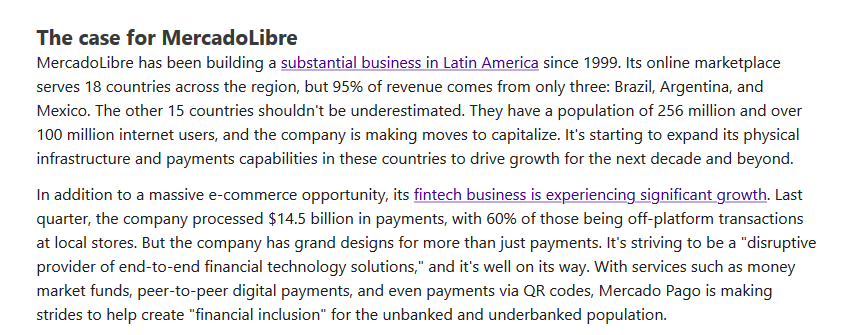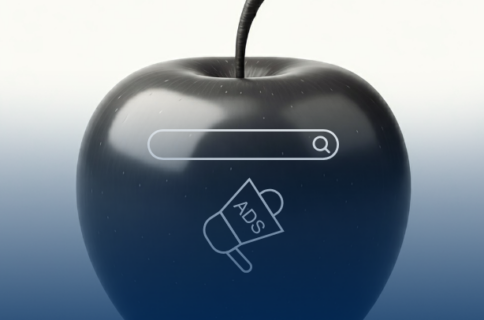How Do You Create Brand Loyalty in Latin America?
How Do You Create Brand Loyalty in Latin America?
Why ask, “how do you create brand loyalty in Latin America?”
To start, LATAM had 267 million digital buyers in 2019, and that number is expected to increase by 30% by 2024. Online sales in LATAM reached $70 billion in 2019. That’s going to jump to $116 billion in 2023.
However, don’t assume marketing to Hispanics in Latin America is similar to marketing to the same in the United States, Spain, etc. Despite sharing a language, the populations need individualized, localized attention!
That’s what’s needed to properly build brand authority throughout Latin America, for consumer behavior is regional! The same brand building strategies working in Brazil differ from those in Peru. Mobile preferences in Argentina contrast from those in Mexico, and so on …
Below, gain an individualized perspective on buying behaviors and e-commerce stats within major Latin American regions. Moreover, understand the main elements that help brands build loyalty and authority across LATAM.
How Do You Create Brand Loyalty and Authority in Latin America?
On a regional level, Brazil and Mexico compete for the spotlight, accounting for 32.5 percent and 28.8 percent of the Latin American e-commerce market, respectively. However, other economies such as Peru, Argentina, and Colombia have been drawing increasing attention due to their swift growth.
Further Reading:
- How to Do Spanish SEO and International Marketing
- Why and How to Create a Style Guide for Translations
Marketing in Brazil
Brazil offers one of the world’s largest e-commerce markets, 10th in the world in total sales. In 2019, Brazilians spent $16 million online.
Brazil is one of the largest LATAM markets with a population of over 210 million. A recent recession influences spending habits, as 75% of the population seeks to save. Brand loyalty and authority heavily depends on price point, as 19% will shop to seek a brand that offers lower prices and 14% of Brazilians will wait for a sale.
Brand and individual product/service research along with on to offline price checking are common consumer behaviors, in an economy with buyers who are savvy with social media and expect quick and efficient replies and solutions from brands.
Brazilians are willing to open their wallets for experiences as well as needs, for outdoor activity is celebrated in their country. Moreover, beauty and electronics are important to inhabitants of Brazil, being one of the world’s largest beauty markets.
Brazilians embrace installment payments, which puts brands that offer such in higher demand. One-third of consumers will not make a purchase unless they have the option of making installments.
E-commerce in Brazil
- E-commerce is expected to reach $23 billion by 2021
- Mobile devices were used for 27% of online purchases and 25% report researching for sought products each week on smartphones
- 2017 hosted 112 million e-commerce transactions, with an average amount of $130.00
- Main product categories: mobile (21%), household appliances (19%), electronics, home decor, and fashion
- In 2017, the daily average of time spent online was over 3.5 hours
- Facebook and WhatsApp are leading social networks
- 63% of online shoppers get search recommendations via social media before making a purchase
- 98% of businesses that target Brazilians use Facebook Ads
- 100 million Brazilians are active on social media on a daily basis
Marketing in Mexico
Mexicans care about price and quality of customer service. Mexico necessitates the intimate understanding other LATAM countries deserve, for consumer behavior and spending abilities differ depending on region. There is a huge contrast in spending between urban and rural areas as well as those living in northern and southern territories.
Good news for brands seeking authority and loyalty in Mexico, it’s the country with the highest rate of e-commerce across LATAM. Amazon is the largest brand, but Mercado Libre and Wal-Mart of Mexico gain momentum. Among the most loyal in the world, Mexican consumers are open to international brands – Samsung, L’oreal, Adidas, Uber, Netflix…
Brands that take interest in making online connections can do so with Mexican consumers, the country had 80 million web users in 2019. It’s estimated that 63% of the country’s population was on Facebook in 2020.
Obesity remains a national concern, so healthier, organic foods have become a recent trend. In general, Mexican consumers seek time-saving products and services, those offering natural ingredients or processes as well as an artisanal angle especially make headway.
E-commerce in Mexico
- E-commerce sales are expected to reach $39 billion by 2021
- Online shopping accounts for only 2% of the country’s $203 billion annual retail sales – that’s a huge opportunity for new brands!
- It’s projected Mexico will have 55 million online shoppers by 2020
- 70% of online shoppers use desktops for purchases
- B2C e-commerce grew 26% from 2016 to 2017
- Fashion will bypass electronics in 2020, accounting for $4.9 million in e-commerce revenue
- Social media is preferred by those in the 20 to 30 age range and Internet users spend about 3.5 hours on social media per day
- Mexico is Facebook’s 5th largest market
- Most popular social networks: Facebook (75%), Pinterest (9%), Twitter, YouTube, and Instagram
Marketing in Peru
The Peruvian economy has been growing, and has been the country with the highest growth rate of Internet users, with 18 million Peruvians enjoying connectivity in 2017. E-comm grew in Peru by 198% from 2015-2017. Strong economic growth inspires more Peruvians to shop with a larger disposable income. Peruvian income has tripled since 2000, but a great portion of those in good economic condition are in urban and coastal communities. However, poverty rates remain high (more than 55% in some rural areas).
Since more Peruvians have adopted the Internet, it’s become more common to celebrate and complain about brands online. Peruvians are drawn to quality products and rational buying decisions.
Peruvians are savvy about brands presently existing throughout LATAM and can be skeptical in adopting new brands. However, for common items, low price can be one way new brands can penetrate the market. Often seeking promotions and discounts, Peruvians are quick to consider e-commerce choices. Peru hosts beer maker, Cristal, one of the country’s top brands.
E-commerce in Peru
- E-commerce grew 198% from 2017 to 2019
- 90% of Peruvian adults made (at least) one online purchase
- Peru has 12.5 million online shoppers, with 8.6 million using mobile devices
- The smartphone/tablet market is expected to grow 55% by 2020
- Peru’s online shoppers are mostly younger, with 55% being less than 30 years old
- Top products sought online: electronics, clothes, and shoes
- Popular e-commerce websites: Mercado Libre, OLX, Linio, Falabella, Ripley, and Platanitos
Marketing in Colombia
With a steady growth of middle-class consumers since 2012, Colombians are ready to make on and offline purchases. However, marketers need to be aware of the vastly different behavior depending on the region.
There is a large economic gap between rural and urban areas; Bogota has more than half of its citizens living a middle-class lifestyle, but travel to some rural areas, and the percentages of those living in poverty greatly increase.
Colombians are ready to buy more non-essentials, with a strong emphasis on fashion, new brands, and innovative products/services. Growing more concerned for health and the environment, loyalty increases in this LATAM country, especially for brands offering organic products and that take an interest in the environment. Colombians grow more concerned of where a product comes from and how it’s made.
Healthy, ethnic food categories are especially fast-growing, and organic food products are a new trend. Colombians are conditioned to buy imported goods, and price plays an important role. Online consumers have been making purchases from foreign websites (American, Mexican, Chinese) for some time.
E-commerce in Colombia
- Colombia is the only LATAM country with a Ministry of E-commerce
- E-commerce grew 64% between 2015 and 2016
- E-commerce amounted to $4.8 billion in 2017, the same year there was a 3.5% increase in visits to e-commerce sites versus the prior year
- The B2C segment is heavily influenced by internet options and conveniences, such as online payment services
- 14% of people use their phone to make an online purchase
- COD purchases are preferred, accounting for 40% of purchases
Marketing in Chile
The Falabella brand is Chile’s pride, but the region is hosting a number of successful brands to date. Consumer behavior has elevated from needs-based to seeking social status. While price remains important to Chileans, quality, durability, customer experience, and customer service are main factors in building brand authority.
Purchases are made on and offline, but e-commerce sales reached $6 billion in 2019. Chileans are willing to adopt foreign brands, but are not extremely loyal. Social networking continues to grow in the region, so opportunity is present for brands that are environmentally aware and respectful of native trends.
E-commerce in Chile
- E-commerce has doubled in the last five years (2019)
- 2017 B2C sales reached $3 billion (an increase of 20% from 2016)
- In 2017, 5.7 Chileans were online shoppers
- 40% of the population makes monthly, mobile payments
- 13 million Chileans are active social media users, 68% access on a daily basis
- Most popular social networks include Facebook (68%), YouTube (13%), Pinterest, Twitter, Instagram, and Tumblr
Marketing in Argentina
The LATAM giant, MercadoLibre, started in Argentina but quickly spread throughout Latin American countries. A smaller oil brand, YPF, is Argentina’s big money maker in the area. Consumption in Argentina is more similar to that of Europeans than the rest of Latin Americans, for Argentinians seek value, being more conservative with money.
Recently, it’s been discussed whether Mercado Libre is a better stock purchase than Amazon.

For example, a new brand may be preferred over another due to price point. Purchases here are associated with sub-brands and special offers. However, consumers in Argentina, being more selective, are reluctant in engaging new brands. Local and regional brands, being less expensive, are mostly preferred.
However, the people are not entirely loyal; consumers will change spending habits regarding take-out food, alcohol, and household products, opting for brands that can offer cheap and convenient purchases.
Brands, looking to take advantage of competitor errors related to customer satisfaction, constantly use online channels to captivate and lure Agentinian consumers with discounts, deals, and offers.
E-commerce in Argentina
- Argentina ranks 2nd worldwide regarding e-commerce retail growth
- It’s expected to pass Chile and Colombia among LATAM’s largest e-commerce markets
- Annual online sales revenue amounted to 403 billion Argentine pesos, a 75% increase from the prior year
Major Elements of Consideration for Building a Brand in LATAM
Cutting cost and offering products/services at rock-bottom prices is one way to gain momentum across Latin American markets, but most brands don’t like the idea of offering the lowest price, for that may not be aligned with its branding or operational pursuits. Therefore, brands must consider other ways to penetrate individual LATAM countries.
Consider the following major elements in building brand loyalty and authority in Latin America.
Further Reading:
- What is Transcreation (for Content)
- Basic Keyword Research for Spanish SEO
- Mistakes Brands Make When Engaging LATAM Consumers
Digital Sales Funnel
More consumers across LATAM are getting access to and using the Internet. The demand is there, but foreign brands continue to struggle in offering properly translated and targeted website information. A huge mistake continues to be relying on translating content to Spanish without considering regional differences in language usage and culture.
Millennials and Generation Z consumers are the ones brands want to pay the most attention to regarding online sales and offers, for across LATAM, they account for the largest percentage of online shoppers. Brands that want to penetrate individual markets need to understand individual preferences within this subset of the LATAM population.
Begin to understand the on-to-offline shopping behavior of LATAM consumers. For example, 43% purchase travel-related products and services online but only 9% purchase household items online. Furthermore, over 40% of LATAM consumers are used to checking online prices against those offered at physical stores.
Larger retailers don’t need convincing, for behemoths like Amazon have been savvy to opportunities within LATAM for years. Based on 2017 data, Amazon was among LATAM’s biggest online retailers regarding unique visits.
Traditional advertising has been declining for years in favor of digital and mobile ads. However, across LATAM, online ads are getting a better return on investment, especially in regions like Colombia and Argentina.
High-End Consumers
A fault of foreign brands is neglecting to recognize that premium consumers exist throughout LATAM. However, it’s extremely difficult to get an idea of your “average” LATAM consumer, for there is so much flux in expendable income and spending depending on region.
According to 2017 research, 68 million LATAM consumers are categorized as high-income residents, with 21% maintaining their lifestyle despite crises. Furthermore, there are some things that LATAM consumers are willing to pay more for, depending on category and convenience. For example, 57% of consumers will pay more for higher quality.
Why are Latin American residents buying premium products and how are high-end brands building authority in LATAM? 37% report they buy premium products because it makes them feel good and 32% believe it reflects that they have good taste. Success is another factor, for almost half of respondents mentioned quality brands make them feel successful and/or make others think so as well.
Health and Wellness
The life expectancy across LATAM has increased, yet obesity continues to be a major health issue. The trend toward a longer life is propelled by a dedication toward better health. 80% seeks to be proactive in prolonging their life yet 19% of the population does not have access to health coverage.
Due to the growing health trend, consumers are making decisions based on related factors. 41% will make a food purchase because it’s low in fat and 34% of consumers report making sugar-conscious decisions. However, a low percentage (9%) report making vegetarian-based food choices.
Mexico may be the place seeing the most consumer behavior based on health and wellness aspirations. Since 2012, there has been a 90% increase in organic brands and offered products. In the same period, the number of gluten-free items and categories has increased by 143%.
How Do You Create Brand Loyalty By Segmenting Consumers?
As mentioned, many brands fail to build authority throughout LATAM due to a lack of understanding regional differences and preferences. LATAM is not a holistic endeavor, but one that demands strategy and a marketing team that not only understands language but cultural and behavioral differences per country and region.
Even within a given country, the consumer behaviors of those living in rural communities can drastically differ from those living in urban areas that have better access to the Internet as well as better-paying jobs.
Due to poor understanding, to date, local brands outperform foreign ones. 63% of Latin American consumers prefer local brands, and 54% admit that local brands are more “in-tune” with local traditions, styles, etc. 71% have an outlook that foreign brands are more expensive.
However, further understanding of a given market reveals that behaviors differ depending on the category; most LATAM consumers prefer to buy their milk from local suppliers yet a higher percentage do not care when it comes to cleaning products. When it comes to personal care or impulsive food items, LATAM consumers are more willing to choose global brands.
Why do Latin Americans prefer local brands over global brands? Almost half of respondents admit that it has to do with money. 27% admit that local brands taste better, while 23% say that they buy local due to national pride. 36% of those in Chile admit they purchase local due to a good consumer experience.
Conclusion
How do you create brand loyalty in Latin America? View Latin America as a collection of individual markets with specific consumer behaviors and traditions. Offering your brand’s information in Spanish is simply not enough to penetrate expanding LATAM markets and make the most of opportunities therein.
Consider the market for alcohol in Mexico. Based on 2017 statistics, the alcoholic market is tempting but segmentation is absolutely crucial, for rum, tequila, beer, or vodka could lead in sales depending on where goods are offered within Mexico.
In conclusion, building brand authority and loyalty in Latin America can be incredibly lucrative for your brand but it necessitates a marketing strategy that stresses localization.
Contact us regarding LATAM content marketing services. Living in Latin America gives us incredible insight regarding regional preferences and overall behaviors. Allow us to help you navigate throughout LATAM, accentuating on opportunities that make the most sense for your brand and ensuring your messages resonate with locals in the manner you intend.





